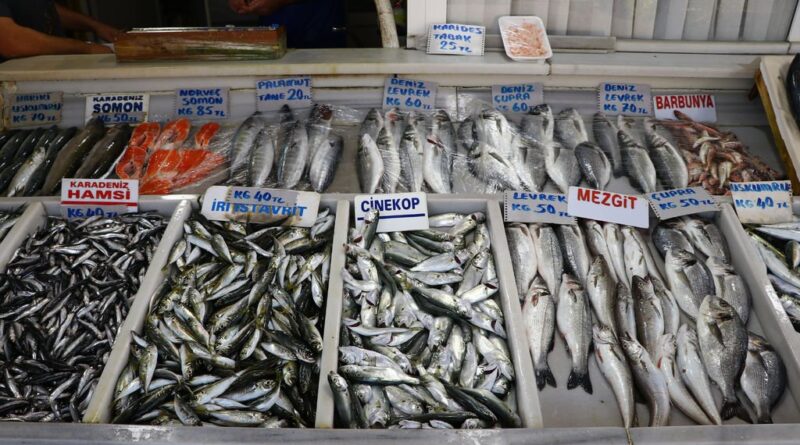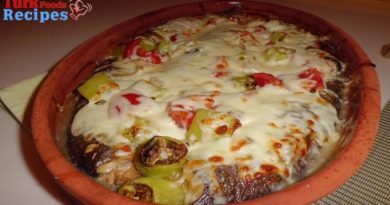What fish are eaten in November?
What fish are eaten in November? The most fertile months of the year for fish are October and November; fish diversity increases in the seas. You will see a variety of fish on the stalls and they are all delicious. Knowing which fish to buy, when and how to cook it is important for your health. How do you know when the fish is fresh and which spices are used in which fish?
The most fertile months of the year for fish are October and November; fish diversity increases in the seas. You will mostly see bonito, anchovy, bluefish, red mullet (red mullet), horse mackerel, carp, flounder, mullet, sea bream, swordfish, mackerel, haddock, sea bass, yellowfish, blue fish, sardines, grouper, characa (black mullet) and all of them are very. is delicious. Knowing which fish to buy, when and how to cook it is important for your health. How do you know when the fish is fresh and which spices are used in which fish?
Turkey is a country covered by the sea on three sides, but we do not prefer fish in meat consumption. Per capita fish consumption in our country is only 6.26 kg. Those who want to have a healthy life and keep their immunity high should consume fish at least twice a week.
October and November mean abundance on the stalls. October is the month of November, and you will eat the most delicious bonito in these months. Acorn decreases a little in November, anchovy population increases. Nowadays, the abundance of anchovies has also reflected on the stalls. During this period, mostly anchovies, bonito, horse mackerel and blue fish are consumed. Anchovy pan is also nice, but it can be grilled as it starts to grease.
The period when fish fed and oiled in the Black Sea arrive in the Sea of Marmara coincides with these months. That’s why bluefish is delicious; bonito, red mullet, red mullet and horse mackerel are fat. We are in the liveliest period of the fish season. Flounder is especially at its best in these months. Anchovy, sea bream, swordfish, mackerel, haddock, sea bass, yellowfish, blue fish, sardines, grouper, characa (traça) are abundant.
Contents
Let’s get to the recipes you will make with the fish you bought in November ….
What fish are eaten in November ?
Bonito
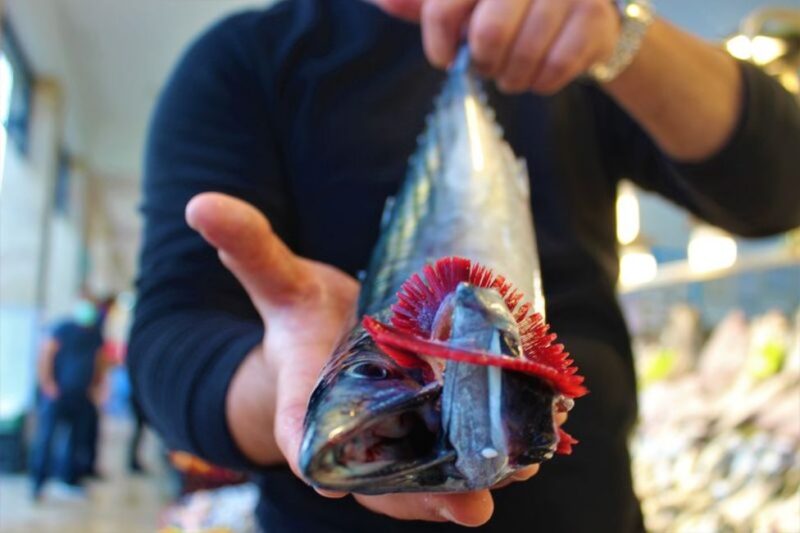
Among the fish species, it is one of the fish that contains the most vitamin D and protein in its meat. Bonito fish plays an important role in healthier skin thanks to its cell-regenerating properties. It is important for eye health due to the vitamin A it contains. Bonito, which contains folic acid, iron, potassium, phosphorus and Omega 3 fatty acids, is a preferred fish because it is good for cholesterol. When you extract the fish in the morning, you can marinate it in certain flavors and certain oils. This situation causes the fish not to stick and to leave a much different flavor. Bonito is a little heavy fish. It suffocates people because it is a meat fish Therefore, it can be consumed every day in certain flavors and with very different tastes when marinated. The best cooking method that can be done to get the real taste of bonito is cracking. Snap is an ancient technique. When there were no ovens, the fish was boiled in water, the oil was added later or while cooking, and a few pieces of pepper, tomato, potato and onion were added.
Baked Bonito
Materials;
1- 2 large acorns
2- 3-5 normal sized broccoli (on request)
3- 2 medium-sized onions
4- 2 lemons
5- Half tea glass of olive oil
6- 3 red and yellow peppers
7- Some salt, pepper and mint
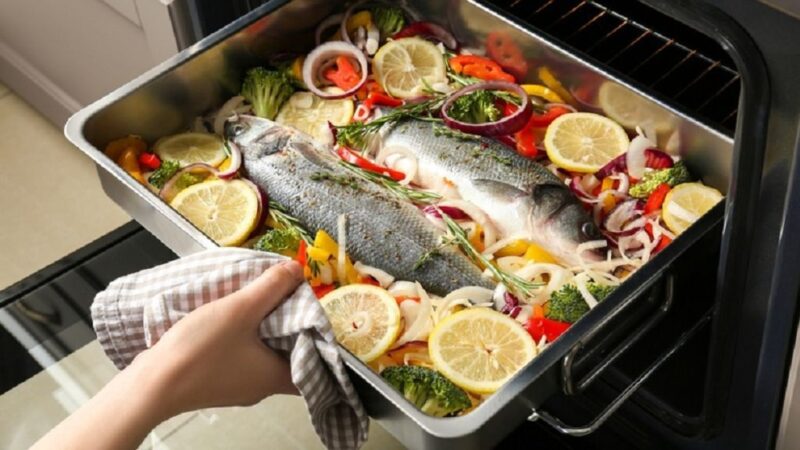
How is it done?
-Since we will bake the bonito, we first need to fillet them.
-Pass your fish that you have boned and filleted under the water.
-Cut the broccoli, onion and lemon into slices.
-Slice the peppers after washing.
-Then place the broccoli and onions on a baking tray.
-Arrange the acorns that you blend with olive oil and salt on the tray.
-After lining the acorns with lemon and pepper, add salt and pepper.
-Optionally, you can add a pinch of thyme.
-After sprinkling olive oil on it, cook the acorns in the oven that you preheated at 150 degrees until they are browned.
-This time corresponds to approximately 35 minutes.
Bluefish
Bluefish is the most delicious and economically valuable fish in our seas. October is one of the most delicious months of bluefish. You can consume bluefish until February. It is a very powerful source of vitamin B12. Selenium rich in antioxidants, magnesium, Omega 3 and Omega 6 fatty acids, potassium, phosphorus, zinc, copper and sodium minerals that play an effective role in the regulation of heart rhythm are found in bluefish fish. Bluefish, which is important for heart health, is good for fatigue and weakness. It is also one of the most delicious fish in Turkish cuisine.
Bluefish grill
Materials;
1- 1 bluefish
2- 3 bay leaves
3- 6 black peppercorns
4- 1 glass of olive oil
5- Enough salt
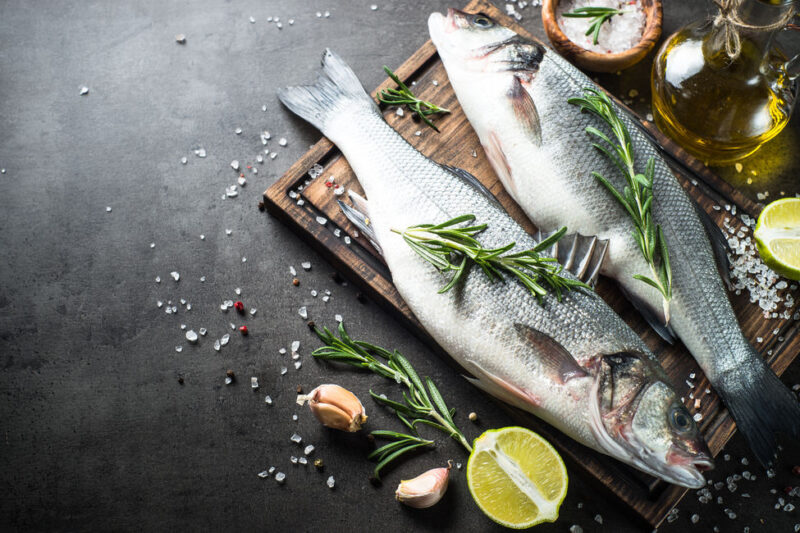
Preparation of
Clean the bluefish thoroughly, brush the chest with a toothbrush. No blood left anywhere, it makes bitterness. Remove the middle bone and open it well. Put olive oil, black pepper and bay leaves in a deep bowl. After keeping the bluefish in this mixture for 15 minutes, salt it and place it on the grill with the open side. After cooking for about 6 minutes, turn it over, cook the skinned part for 3 more minutes and remove from the grill. Bon Appetit.
Anchovy
Although Turkey’s Black Sea region consumed in every culture and a constant part of the kitchen anchovy dishes are the most done in this region. Steamed anchovies with anchovies, fried anchovies, anchovy salad, rice with anchovies, pie with anchovies, anchovies with anchovy (lamesli), pita with anchovy, pastry with anchovies, anchovy with anchovy (corn bread with anchovies), anchovies with eggs, anchovies on tiles, anchovies in vinegar (anchovy salami), anchovy pickles, anchovy bird (anchovy puli) and anchovy patties are made.
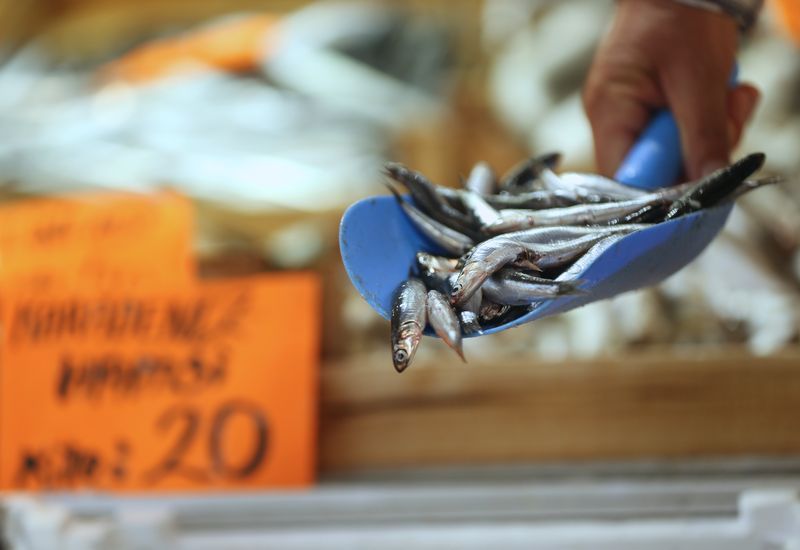
Anchovy Rice
A type of food belonging to the Black Sea region, anchovy pilaf is the indispensable taste of the Black Sea. Especially when made in Sinop, where anchovy is the most delicious, it becomes a dish that leaves its taste on the palate.
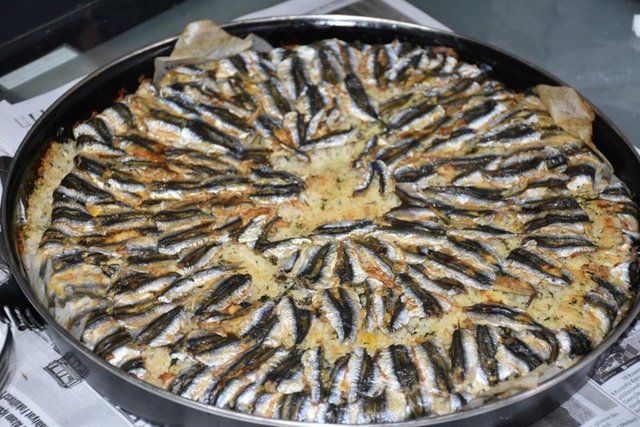
Materials
1- 500 gr anchovies (bones removed)
2- 500 gr rice
3- 1 head of onion
4- 3 tablespoons of peanuts (pine nuts)
5- 2 tablespoons of currants
6- 1 teaspoon of black pepper
7- 1 teaspoon of mint
8- 1 teaspoon of cinnamon
9- 1 water glass measure of oil
How to cook rice with anchovies?
Put the rice in a bowl, add 4 – 5 fingers of warm salted water and let it sit for about 30 minutes. Wash several times under running water and strain to increase the starch. Put the oil in the pan. When the oil is hot, add the peanuts and turn yellow. Add the onions and fry with the peanuts until the onions turn pink. Add sugar and currants and bring to a boil. Adjust the salt and pepper. Add the rice and mix. Boil a stone again and reduce the fire. Close the lid of the pan tightly and cook the rice for about 15 minutes on low heat. Turn your oven to 180 ° C and heat it. Remove the cooked rice from the heat. Open the lid, put a towel of paper in the mouth of the pot and close the lid again. Let the rice stand for 20 minutes in this way and add the chopped parsley. Stir with a wooden spatula or flat colander, taking care not to crush the rice. Wash the anchovies in a few water, drain and salt. Grease an oven dish large enough to hold the rice and flour it with corn flour. Lay a row of anchovies with their backs down on the bottom of the bowl. Glue the anchovies to the edges so that the tail parts hang out of the bowl. Fill the pilaf into a bowl lined with anchovies, and close the anchovy tails over the rice. Cover the rice with the remaining anchovies and put the bowl in the hot oven. Cook the rice for about 30 minutes until the anchovies are browned well and take it from the oven. Turn it over on a tray and serve hot.
Coral
It is a pink colored fish. Well-developed eyes are located near the dorsum of the head. The pectoral fin is very long. It lives in stony, mossy areas and between rocks in waters up to 250 m deep. It can reach 91 cm paint and 7.7 kg weight.
Coral in the pan
1- 7 coral fish
2- 2-3 tablespoons cornmeal
3- 1 teaspoon salt
4- Half a cup of oil for frying
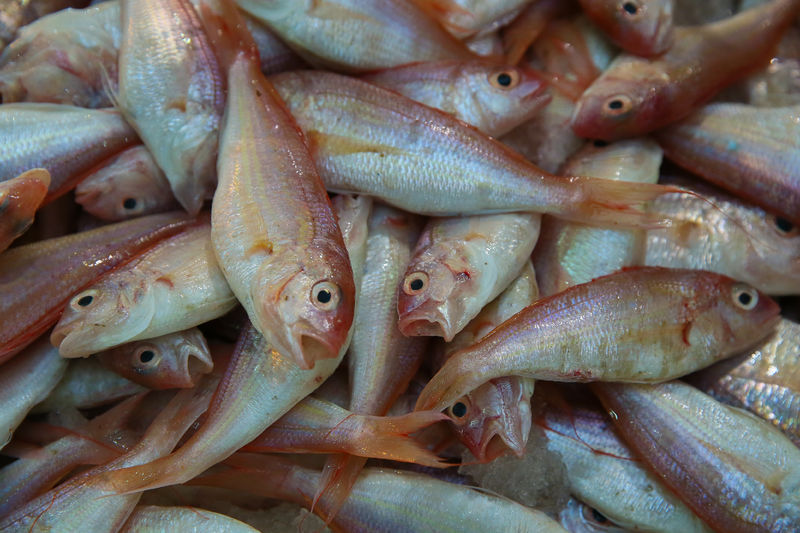
How is it done?
The long fins of the corals that have been cleaned inside are also cut off. The fish are salted. It is thoroughly covered with corn flour and fried in hot oil. The look and taste on the plate is magnificent.
Red Mullet
Although it is a medium-sized fish, it is meaty and filling. Ideal for baking and roasting. It has a red-pinkish appearance. It is wrongly known as Barbun among the people. Its real name is kidney beans. Red mullet is distinguished from mullet by its erect nose, its mouth reaching eye level, three scales under the eye socket, the sides of its body, and its first dorsal fin without a tape.
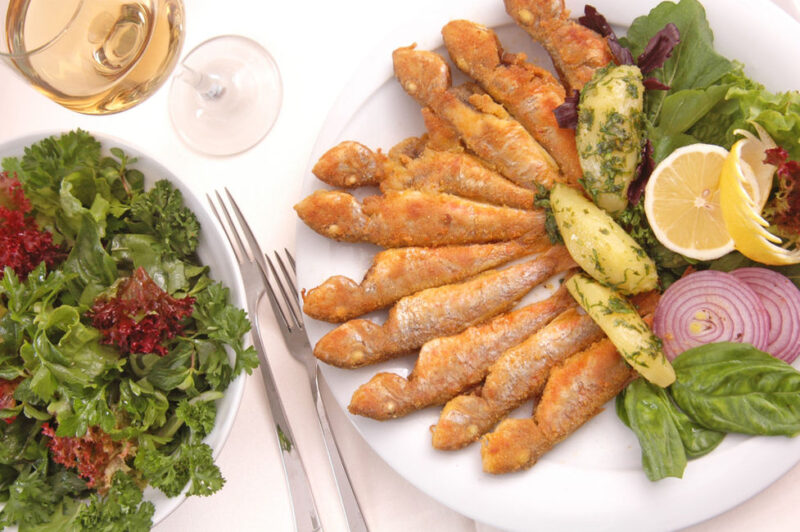
Baked Kidney Beans
1- 1 kilo red mullet
2- 1 tablespoon of butter
3- 2 medium onions
4- 1 tablespoon tomato paste
5- 1 pepper
6- 2 tablespoons of black pepper
7- 2 teaspoons of salt
8- 1 teaspoon of red pepper
9- 3-4 bay leaves
How is it done?
Separate the fish from the head and wash. Salt it and let it stand. Finely chop the peppers. Chop the onions in thin slices. Put the butter in a pot and fry it with tomato paste for 5 minutes. Add the spices and roast for another 1-2 minutes, then remove from the heat. Grease the pan in which you will make the fish. Line the onions at the bottom. Line the fish on it.
Put the bay leaves at the top. Let’s wait until our red fish is cooked in the oven. Let’s eat without cooling.
Perch
Its meat is lean and usually consumed fresh. Black Sea coast of Turkey, located in the Marmara and the Mediterranean. It is hunted in all seasons, usually from mid-May to late November. During the autumn months, when they begin to breed in the mouths of the river, they gather in flocks. In the Black Sea, they breed at the mouths of streams in the winter months, in the Mediterranean between April and May.
Sea Bass Marin
Materials;
1- Seabass
2- 1 head onion
3- 1 tea glass of apple cider vinegar
4- 250 g mustard
5- Juice of 1 lemon
6- 1 tea glass of olive oil
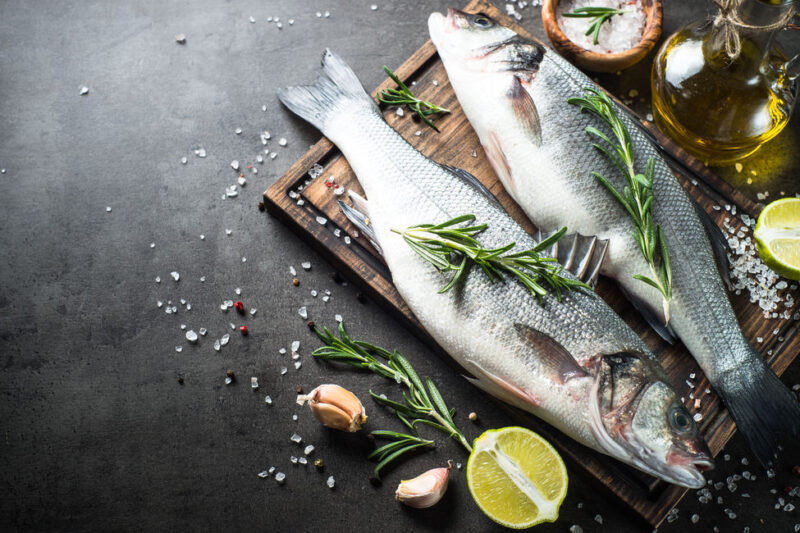
How is it done?
Sea bass is filleted and sliced finger-to-finger. On one side, the onion is chopped and rubbed. Then the onion is mixed with a glass of lemon juice, 250 grams of mustard. Half a tea glass of apple cider vinegar is added into it. Then olive oil is slowly added to this mixture and blended. The sauce prepared is heated on the stove. (Be careful not to boil it) The sauce is taken from the cooker and the fish are thrown into it. The sauce containing the fish is kept for 8 hours. After 8 hours, the fish are removed, decorated with various greens and garnishes, and served cold.
Mackerel
The grilled, pan, stuffed, steamed and seasoned mackerel, which is high in protein and rich in vitamins and minerals, is very delicious… The mackerel, which was hunted abundantly at the most delicious time of its meat, is unfortunately a rare and almost extinct fish. The smallest of the mackerel is calinaria. The ones that are around 20-25 cm and fat are called mackerel, the lean and coarse mackerel that turns into eggs is called crosse, and the ones caught in summer are called lipari.
Salmon
Experts recommend consuming salmon which is good for Alzheimer’s, chronic diseases and cardiovascular health and increases body resistance these days, which are struggling with coronavirus. You can prefer Black Sea salmon. It is important to consume salmon as boiled and steamed in order to preserve its nutritional value. Salmon is an important nutritional source for brain development, recovery of chronic diseases, Alzheimer’s, cardiovascular diseases and overall health of individuals. It is a very important source of omega. One of the fish whose consumption we need to make a habit of …
Salmon with vegetables in the oven
Materials;
1- 6-7 flower broccoli
2- 1 potato
3- 1 carrot
4-1 onion
5- 3 cloves of garlic
6- 1 red capia pepper
7- 1 pinch of black pepper
8- 6-7 bay leaves
9- 2 large salmon
10- 3 slices of lemon
11- 1 pinch of salt
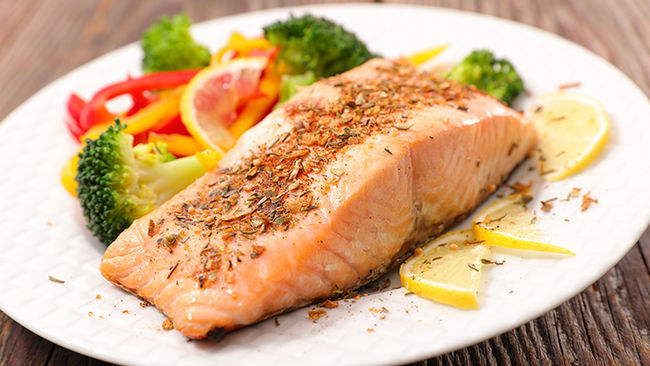
How is it done?
Place baking paper at the bottom of the baking tray. Then place the sliced potatoes on the bottom of the tray. Then, slice the carrots, red capia peppers and onions. Add the garlic and bay leaves. Add the salmon on top and line the sliced lemons on top. Set the oven to 180 degrees. Cover it with fireproof paper for the first half hour and cook in its own steam. For the other 15 minutes, you can pull out the paper and fry it.
Spices used in fish
When cooking fish, the use of spices also plays an important role. Gourmet masters list the spices that should be used in fish dishes as follows:
Basil: In dishes made with shellfish such as crab, lobster and shrimp.
Bay leaf: All steamed fish, boiled, fish skewers.
Keraviye: Steamed, boiled and stuffed.
Ginger: All oriental-style fish dishes, roasting, lobster, sauce making, mussels.
Curry: Far Eastern fish dishes, as an alternative to ginger (already contains ginger).
Marjoram: In butter, sauces and stuffed dishes served with fish.
Mustard: Powdered in casseroles, made with crab.
Nutmeg: With crab and lobster.
Mint: Grilled fish, fish soup, fried jumbo shrimp.
Paprika: Stuffed and casseroles.
Parsley: In butter, sauces (especially in lemon sauce), stuffed with fish.
Black pepper-white pepper (grain and powder): For marinating and flavoring in all fish and seafood dishes.
Red pepper (powder or flakes): In steamed and boiled, soups, stews.
Sage: Stuffed and in casseroles.
Thyme: With all seafood in the US.
Tarragon: In oven and fish dishes with sauce.
Rosemary: In oven, sauced oven, roasting and stews of fish that taste relatively flat.
Garlic: In stews, sauces, roasting, soups, olive oil sauces.
Walnut: In Tarator and similar sauces.
Almond: As an alternative where walnuts are used.
Capers: Steamed in pickles.
How to understand the freshness of fish?
The pupils of fresh fish are curved outward, the pupils of stale fish are collapsed, dull and dull. When you press and pull your hand on the fresh fish, there is no trace, but when you press and pull your hand on the stale fish, the trace remains, the fish cannot return to its former shape. Instead of frying the fish in oil, it should not be neglected to consume it in the oven, grilled or steamed at least twice a week in order to avoid spoiling the healthy fats in its content and to avoid excessive fat consumption.
Source:haber.com
